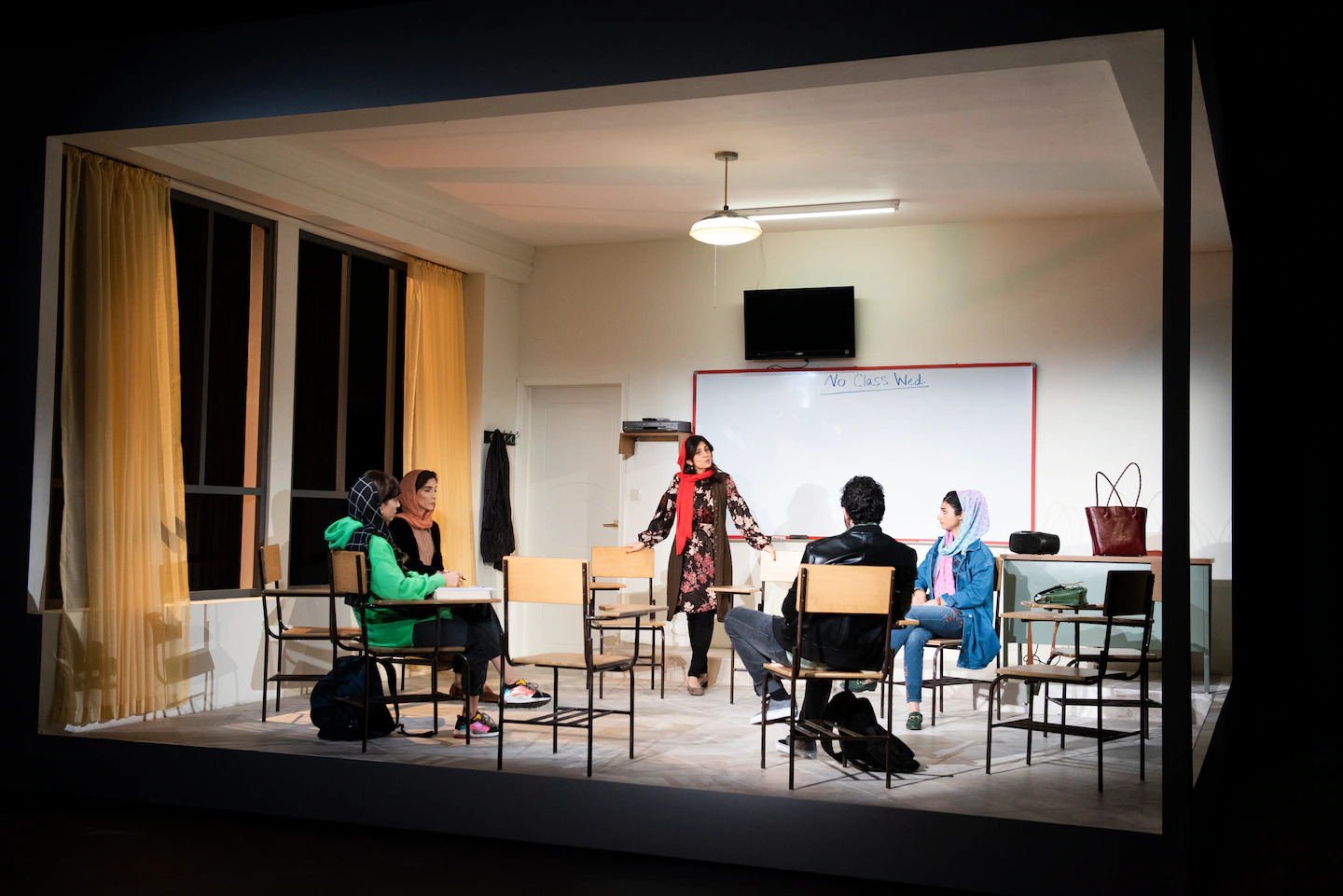Learning a new language is difficult, but fitting in somewhere foreign is even harder. In her play English, Sanaz Toossi demonstrates the unforeseen cultural difficulties of learning a new language that turns what should be a purely semantic puzzle into a cultural threat.
Set in a language school in Tehran, Iran, the play revolves around four adult students – Roya, Goli, Omid, and Elham – who attend an English class taught by the well-meaning but slightly overbearing Marjan. Each character has a unique motivation for learning English that revolves around either pursuing new opportunities or escaping their past, made clear through a series of engaging vignettes.
Toossi illustrates how while learning a new language seems like unlocking a new form of self-expression, it can actually come at the cost of losing cultural heritage, particularly in the context of the complex cultural dynamic between Americans and Iranians. For the students in the play, becoming truly fluent means losing the mannerisms unique to their culture. As Elham points out, in America, it’s less about the words that they say, and more about how they say them, with the subtle Iranian laughs and scoffs being what truly set them apart.
At the center of this notion are the power dynamics that exist between cultures and languages. The characters' pursuit of English fluency highlights the perceived superiority of the English language, which in turn implies a sense of inferiority for their native Farsi. This dynamic mirrors the historical and political tensions between the United States and Iran, contributing to the characters' internal struggles as they navigate the complexities of linguistic assimilation. Ultimately, America’s cultural hegemony over them is the culture-destroying force that underlies the entirety of the play, but is never explicitly mentioned. Forced to learn English to pursue new opportunities, Iranians must assimilate into a society that frequently treats them with disdain, while also grappling with the potential loss of their cultural identity in the process.
Toossi ingeniously uses the divisive nature of linguistic assimilation as a means to challenge the English-speaking audience's assumptions about communication and cultural identity. By having the characters, who are native Farsi speakers, converse in perfect English when speaking their mother tongue and then switch to broken and harsh accents when actually speaking English, Toossi effectively underscores the complex relationship between language proficiency and an individual's sense of belonging, illustrating how a shift in one’s level of fluency can seemingly create an entirely distinct persona. This clever device not only emphasizes the characters' struggle to adapt and fit in but also acts as a powerful reminder that the complexities of language extend far beyond words, and encompass one's identity and relationship with the world as well.
Through this compelling narrative, Toossi makes a poignant point about language and culture: the pursuit of linguistic assimilation can inadvertently erode one's cultural identity and sense of self-worth, particularly when it is driven by power imbalances and historical tensions between different nations and cultures. Language is intrinsically linked to culture through the mannerisms, expressions, and intonations that accompany it, and learning a new one isn’t just a linguistic challenge, but a cultural one as well.
